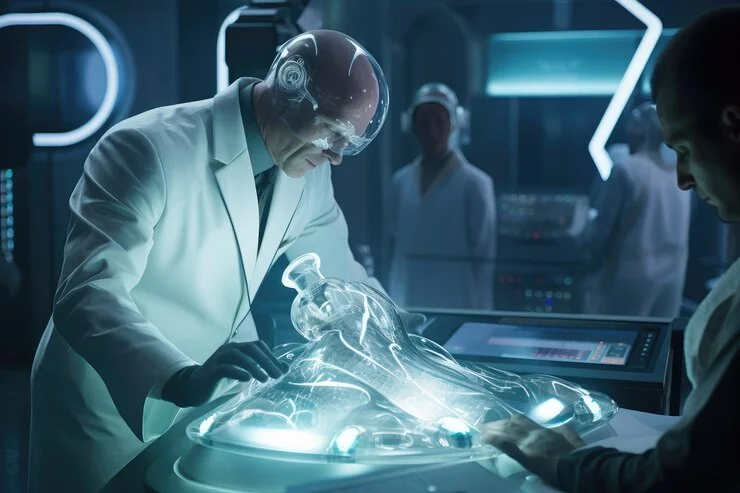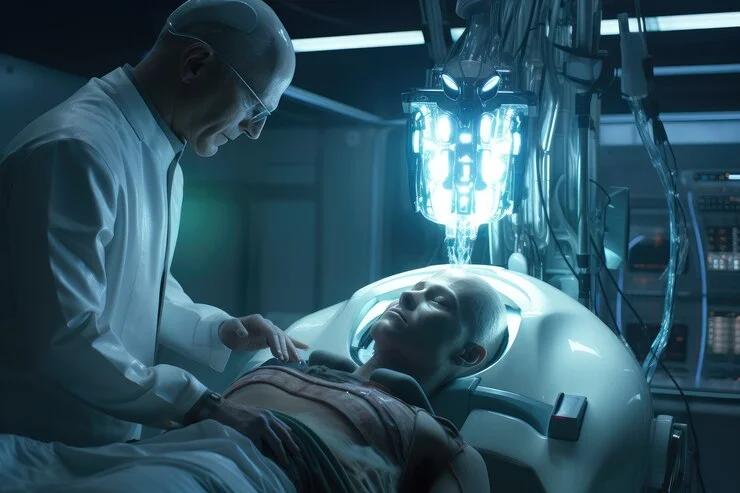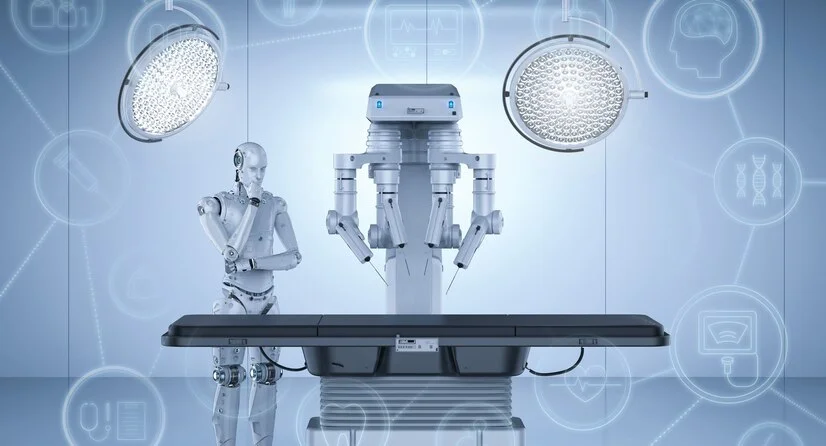-
BP Poddar Hospital
BP Poddar Hospital

Explore the advantages of robotic surgery for cancer treatment, and how it enhances precision, recovery time, and patient outcomes. Learn why it’s becoming a popular choice among cancer patients and surgeons, especially when performed by one of the best surgical oncologists, who brings expertise and advanced techniques to improve your treatment experience.

Cancer treatment is an incredibly personal and challenging journey. As technology advances, so does the field of oncology, particularly in the area of surgical interventions. One such breakthrough is robotic surgery, which has revolutionized the way cancer surgeries are performed. This minimally invasive approach offers numerous advantages over traditional surgery, making it an increasingly popular choice among both patients and healthcare providers.
In this post, we’ll explore the benefits of robotic surgery for cancer treatment, shedding light on why it’s becoming a game-changer for many patients.
Robotic surgery, also known as robotic-assisted surgery, is a type of minimally invasive surgery that uses robotic systems controlled by skilled surgeons to perform surgical procedures. Unlike traditional open surgery, which requires large incisions, robotic surgery involves tiny incisions, allowing for faster recovery, reduced pain, and improved outcomes.
For cancer patients, robotic surgery is used to remove tumors, treat various types of cancer, and even perform complex organ removal surgeries. Surgeons use robotic arms, which are equipped with tiny cameras and surgical instruments, to conduct these procedures with exceptional precision.
Robotic surgery has emerged as one of the most advanced treatment methods for cancer, offering a wide range of benefits over conventional surgery. Below are some of the most important advantages that make robotic surgery stand out:

One of the most significant benefits of robotic surgery for cancer treatment is the enhanced precision it offers. Surgeons can make more accurate incisions and target tumors more precisely, which is crucial in cancer surgeries where precision can mean the difference between removing all of the cancerous tissue and leaving some behind.
The robotic system offers high-definition 3D visualization of the surgical area, allowing surgeons to see even the smallest blood vessels, nerves, and tissues. This level of detail helps ensure that healthy tissues surrounding the tumor are preserved, reducing the risk of complications.
Traditional cancer surgery often requires large incisions, which can cause significant pain, scarring, and longer recovery times. In contrast, robotic surgery for cancer treatment requires only small incisions, which are often no more than a few millimeters long. These smaller incisions not only reduce the risk of infection but also minimize post-surgical pain and scarring.
Because the robotic arms are more precise, there’s less trauma to the surrounding tissues, which leads to less pain and discomfort after the surgery. Patients generally experience faster recovery times, allowing them to get back to their daily activities sooner.
Thanks to the precision and minimal invasiveness of robotic surgery, patients tend to experience faster recovery times and shorter hospital stays. With less trauma to the body, patients can often go home the same day or within a day or two after surgery.
This is in stark contrast to traditional surgeries, where the hospital stay can be much longer due to the larger incisions and the time needed for the body to heal. A quicker recovery time also means less time off from work and other daily responsibilities, which is a significant advantage for many people.
Because robotic surgeries involve smaller incisions, there is a lower risk of infection compared to traditional open surgery. The smaller incisions also help reduce the amount of foreign material introduced into the body, such as the surgical tools and drapes used during the procedure. This minimizes the chance of bacteria entering the body and causing an infection.
Furthermore, the precision of robotic arms reduces the amount of tissue manipulation, further lowering the risk of complications such as infections.
For cancers that are located in delicate or hard-to-reach areas, robotic surgery provides a more accurate and controlled approach. The robotic system’s flexibility and ability to rotate instruments 360 degrees enable surgeons to perform complex procedures that may otherwise be difficult or impossible with traditional methods.
For example, in the case of prostate cancer or certain head and neck cancers, robotic surgery allows surgeons to operate in tight spaces without damaging surrounding tissues. The system’s enhanced visibility and articulation give surgeons better access to tumors located in challenging areas.
Robotic surgery for cancer treatment involves several advanced components:
While robotic surgery offers many advantages, it may not be suitable for all patients or all types of cancer. The decision to use robotic surgery depends on various factors, including:
Consulting with an experienced oncologist is essential to determine whether robotic surgery is the best option for your specific case.

Yes, robotic surgery for cancer treatment is generally considered safe. It is performed by highly skilled surgeons who are trained in using robotic systems. The robotic system is designed to enhance precision and control, making the surgery safer than traditional open surgery.
The recovery time after robotic surgery is typically much shorter than traditional surgery. Most patients can return to their normal activities within a few weeks, while those who undergo traditional surgery may need a longer recovery time.
The incisions used in robotic surgery are much smaller than those in traditional surgery, which results in minimal scarring. In many cases, the scars are barely noticeable.
Robotic surgery improves cancer treatment outcomes by allowing surgeons to perform highly precise procedures, which can remove tumors more completely and preserve healthy tissues. This can lead to fewer complications, a lower risk of recurrence, and faster recovery times.
Robotic surgery can be used for many types of cancer, including prostate, kidney, colorectal, gynecological, and head and neck cancers. However, not all cancer cases may be suitable for robotic surgery, depending on the tumor’s location, size, and stage.
Robotic surgery for cancer treatment is transforming the way oncologists treat cancer, offering improved precision, faster recovery times, and fewer complications than traditional surgical methods. As the technology continues to evolve, it’s likely that robotic surgery will become an increasingly common option for cancer patients.
Whether you’re facing prostate cancer, colorectal cancer, or a tumor in a hard-to-reach area, robotic surgery can offer you a minimally invasive solution with better outcomes and a quicker recovery. It’s important to consult with an experienced surgeon like best surgical oncologist in Kolkata to determine if robotic surgery is the right choice for your specific condition.
By embracing the benefits of robotic surgery, cancer patients can experience a more comfortable, less traumatic treatment experience that helps them heal faster and return to their lives with fewer interruptions.

January 30, 2025

January 29, 2025

January 28, 2025